Service History
The
Fleetwing was characteristic of schooners constructed in the Great Lakes shipping frenzy that erupted after the Civil War. She was built in 1867 in Manitowoc, Wis., by a 27-year old shipwright named Henry B. Burger. The staunch
Fleetwing and other vessels built in Manitowoc helped the "Clipper City" earn its reputation throughout the Great Lakes as a premier shipbuilding port, specializing in fast and sturdy vessels for grain, lumber, and general merchandise. It also helped establish Burger's young shipyard, which still builds boats in Manitowoc today as the Burger Boat Company.
The finished
Fleetwing cost $30,000. She had two masts, a 132-foot keel, 28-foot beam, and an 11-foot 6-inch depth of hold. The local press lauded the beauty of the new ship and her solid construction. The Manitowoc Pilot wrote, "She sets very handsome in the water, has a clear run, and reflects great credit upon her contractor, Mr. Henry Burger, and the the force of men in his employ. Success to the
Fleetwing." (16 August 1867)
A Manitowoc Tribune reporter wrote, "...there is no stronger vessel than this. Nothing that would add to its strength has been omitted, and it is fully expected she will rank as A No. 1 [in insurance ratings] for seven years. She is certainly a massive craft, yet from what is said of her and from our knowledge of lake vessels we would infer there is no spare timber used. Her sailing qualities will soon be known, therefore we withhold our judgment as to her merit in that line. If she keeps up the good name our vessels have already attained she will have to make fast time." (15 August 1867)
The
Fleetwing did indeed keep her A1 insurance rating for seven years. She spent 21 years on the lakes, mostly as a "grain clipper," carrying about 20,000 bushels of wheat or corn from Chicago to Buffalo and often coal or manufactured goods on the return trips. These highly competitive trips usually took two weeks or more. Typical crews of vessels like the
Fleetwing consisted of a captain, two mates, a steward (cook), and six to eight seamen. In her later years, the
Fleetwing's crew may have been reduced to six or fewer, including the officers and cook. In 1867, sailor's wages were about $2.25 per day.
In 1880, the
Fleetwing began running lumber for Chicago's largest lumber yard, the John Spry Lumber Company, ending her glory days racing other grain clippers for the Straits of Mackinaw. Facing increasing competition from steam-powered vessels and railroads, she now hauled lumber to Chicago from Michigan's Lower Peninsula mills on Lake Huron, often carrying no return cargo, probably due to the time required or the difficulty of locating one.
While business appeared to be brisk, profits were not forthcoming. In January 1884, Captain Andrew McGraw mortgaged the entire vessel, including her rig, anchors, boats, etc., to James McGraw (probably a relative) for $4,000 at 7 percent interest for one year.
She was rebuilt in 1885 (to what degree is unknown) and was recaulked both in 1886 and in 1887. The vessel was released from the mortgage in March 1888. The terms of the mortgage required that the vessel be insured, and, if it were willfully or negligently damaged or destroyed, the mortgager was given the right to take possession of the vessel and collect his unpaid principal from the sale of the ship. The last clause may have had some bearing on the manner in which the schooner was eventually lost.
In her final years of service, the
Fleetwing also made runs to Menominee, located in Michigan's Upper Peninsula. These trips averaged a little over seven days.
Final Voyage
At dusk on Sept. 26, 1888, the
Fleetwing departed Menominee, Mich., with a load of lumber, bound for Chicago. Heading up Green Bay toward the Death's Door Passage, the schooner sailed into a building northwest gale.
As the looming bluffs of the Door Peninsula came into view, the ship changed course for Lake Michigan, with all canvas flying. Captain Andrew McGraw looked for Table Bluff, a familiar landmark just before the passage. In the darkness and poor visibility, Captain Andrew McGraw reportedly mistook another bluff to the south for Table Bluff and the lights of the settlement of Garrett Bay for those of the Death's Door passage.
Thinking he was entering the passage, Captain McGraw sailed instead into Garret Bay. At 11:00 p.m. the
Fleetwing struck the rocky beach of the bay with a grinding crash that apparently sheared off a mast.
The accounts of the wreck are conflicting. The newspapers indicate that the error was not noticed until she hit the beach, while a secondary source claims that frantic last-minute efforts were made to alter her course after the error was realized.
In either case, the
Fleetwing's days on the Great Lakes were over. The crew swam, waded, or rowed ashore uninjured and found themselves at the home of prominent land owners in the area.
Due to the gale-force winds at the time of the wreck, nothing could be done that night. The next day, the
Fleetwing was found to be badly damaged. Her stern had settled, and she had nine feet of water in her 11-foot hold. Wrecking tugs were called, but it took four days for word to get out from the remote settlement and for an expedition to Garrett Bay to be assembled.
It was hoped the schooner could be repaired, pumped out, and pulled off the beach with a tug, but there was no such luck. Another gale sprung up shortly after the pumps had been installed, and the tug fled from the storm to Eagle Harbor. The force of the gale broke the
Fleetwing in two and ground her hull upon the rocks. By the time the tug returned, the schooner had been battered to pieces and was a total loss.
The vessel was stripped and a large portion of her cargo was salvaged and returned to Menominee. The ship was abandoned by its underwriters. Its deckhouse later drifted ashore and children living nearby used it as a playhouse.
There is some speculation that the
Fleetwing was a casualty of insurance fraud, mostly fueled by Captain McGraw's previous association with similar events.
The evidence is insufficient to determine whether Captain McGraw was a scoundrel or simply the victim of bad luck. However, a third, more provocative, explanation for the wreck remains: The
Fleetwing was supposed to have carried a female cook, and the practice seems to have been on the rise, despite widespread superstition among sailors about women on ships. It was speculated that the distraction of a woman in the galley may have occupied the attention of the
Fleetwing'sofficers while the ship approached Death's Door.
Little of the
Fleetwing's gear and few of the crew's personal possessions were left to the archaeological record. After the ship ran aground, the crew had time to collect their belongings, and other equipment was sold to the captain of the schooner Conquest. The owners of the cargo were able to salvage most of their lumber by sending a tug and two lighters.
Scuba divers first found the
Fleetwing in the mid-1950s. Her several sections lie in 5-30 feet of water, about 110 feet from shore and 350 feet northeast of the public boat landing at Garrett Bay. Unfortunately, the remains of the
Fleetwing have suffered greatly from vandalism. Thoughtless divers have torn up the hull of the once-proud vessel for souvenirs.
Today, the
Fleetwing remains an interesting and accessible example of a post-Civil War Great Lakes merchant schooner. Her history, with its changes of ownership and cargoes, offers a picture of schooner use during the last days of sail on the lakes. Vessels like the sturdy
Fleetwing braved lake gales, winter ice, hard times, and increasing competition from steam as they made possible the settlement and economic development of the Great Lakes region.
Today
The
Fleetwing is accessible by shore entry via the public boat landing at Garrett Bay in Hedgehog Harbor. Several large pieces of the wreck rest approximately 110 to 500 feet from shore (GPS : N 45 ° 17.25' / W 87 ° 02.99').
The site covers an area approximately 83 by 550 feet and is situated on a sloping bottom of stone, sand, and clay in 5 to 25 feet of water. Surface water temperatures in the summer average 50-70º Fahrenheit. In addition to great seasonal water temperature fluctuations, the site is subject to disturbances from waves and ice shoves. Solid sheets of ice form over the site in the winter, and ice shoves can further damage the wreckage.
The
Fleetwing has broken up into four main sections:
Section A
This is the largest portion of the wreck. It is closest to shore and is located on a sloping rocky bottom. It runs from 11 to 13 feet deep.
This main section of the site consists of the vessel's heavy keelson assembly and bilges. These include the keel, keelsons, floors, lower portion of the centerboard trunk, and mast steps. The mast steps and centerboard trunk are clearly visible. The centerboard trunk is especially interesting because little information on their construction exists in the historical record. The upper part of the trunk lies northeast of the boat launch in approximately 15 feet of water.
Another notable feature is a pyramid of eight keelsons, which gave the vessel great longitudinal strength. These timbers prevented the ends of the schooner from sagging when she carried heavy cargoes.
Some debris has gathered along the northeast side of Section A, which seems to be the most exposed to wave action. The southwest side is better protected and therefore better preserved.
Sections B1 and B2
These sections are remnants of the upper hull. They include bulwark stanchions topped with rail caps, deck clamps, lead-lined scuppers for draining water off the deck, and chain plates that held the deadeyes for a mast backstay or shroud. The two pieces lie near each other in approximately 18 feet of water and are similar in appearance. The northernmost portion rests on a rocky bottom and is partly covered by sand, while the other segment rests on a sandy bottom.
Section C1
This section is the centerboard, a slab of joined planks approximately 20 by 8.5 feet. It can be identified by its pivot hole, slightly beveled lower edge, and fastening holes for a lifting ring strap.
Section C2
Slightly overlapping the centerboard is a 33.5-foot segment of the hull with two logs nailed to the underside. These appear to be a hasty patch nailed over a puncture from the grounding, perhaps by the crew of the tug that attempted to save the
Fleetwing. This section is lying in 15 feet of water, immediately north of the first drop-off shelf, and is the closest section to the public boat landing at Garrett Bay. The bottom is somewhat silty, with sand and scattered rock.
Section D
This section is the largest of the outlying pieces and is the farthest from shore. It was probably dragged from the main portion of the wreckage by a retreating ice pack. The north end lies in 25 feet of water, and the south end in 24 feet. It is a large part of the vessel's starboard side and bow, and is 94 feet 3 inches in length. It is resting on a rocky bottom mixed with patches of clay. Notable features are a hanging knee, deck clamps, and a chainplate.
Many of the
Fleetwing's movable artifacts have been lost during years of looting, including the windlass, barrel staves, and unsalvaged portions of her cargo of lumber.
The schooner's anchors were taken by divers around 1956, as were ceramics, clay pipes, a lantern, and other small artifacts. A peavy hook and grating in the Gills Rock Maritime Museum (Gills Rock, WI), are attributed to the
Fleetwing. One of the anchors is reported to reside at the Bank of Peoria, Peoria, IL. The windlass and many of the barrel staves reported to be from the
Fleetwing were taken to the On the Rocks Diver's Lodge in Gills Rock. During the 1960's, a furniture company is said to have hauled away two flatbed truckloads of wooden timbers from the site. Over the years, divers have continued to remove smaller scantlings and loose fastenings.
This well-known wreck is undergoing a slow but continual process of human and natural attrition. Looters continue stealing the few artifacts that are left, while the exposed portions are subject to continued wave action and damage by ice shoves.
The
Fleetwing was listed on the National Register of Historic Places on July 11, 2001.
The
Fleetwing is owned by the state of Wisconsin and is managed by the Wisconsin Historical Society with assistance from the Wisconsin Department of Natural Resources . Like all historic shipwrecks in Wisconsin waters, the wreck is protected under Wisconsin law.
A dive guide for this vessel is available for purchase.
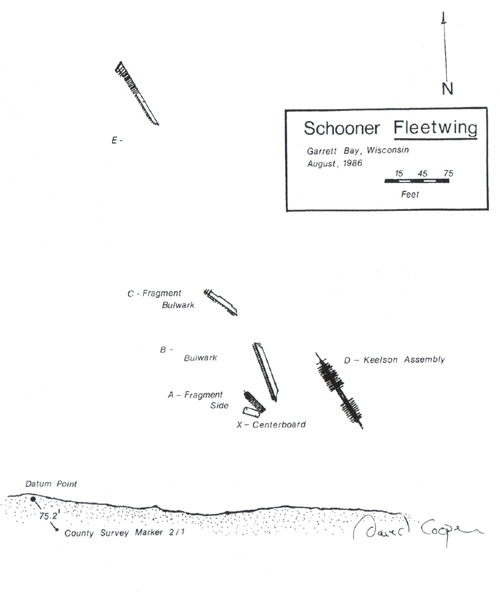
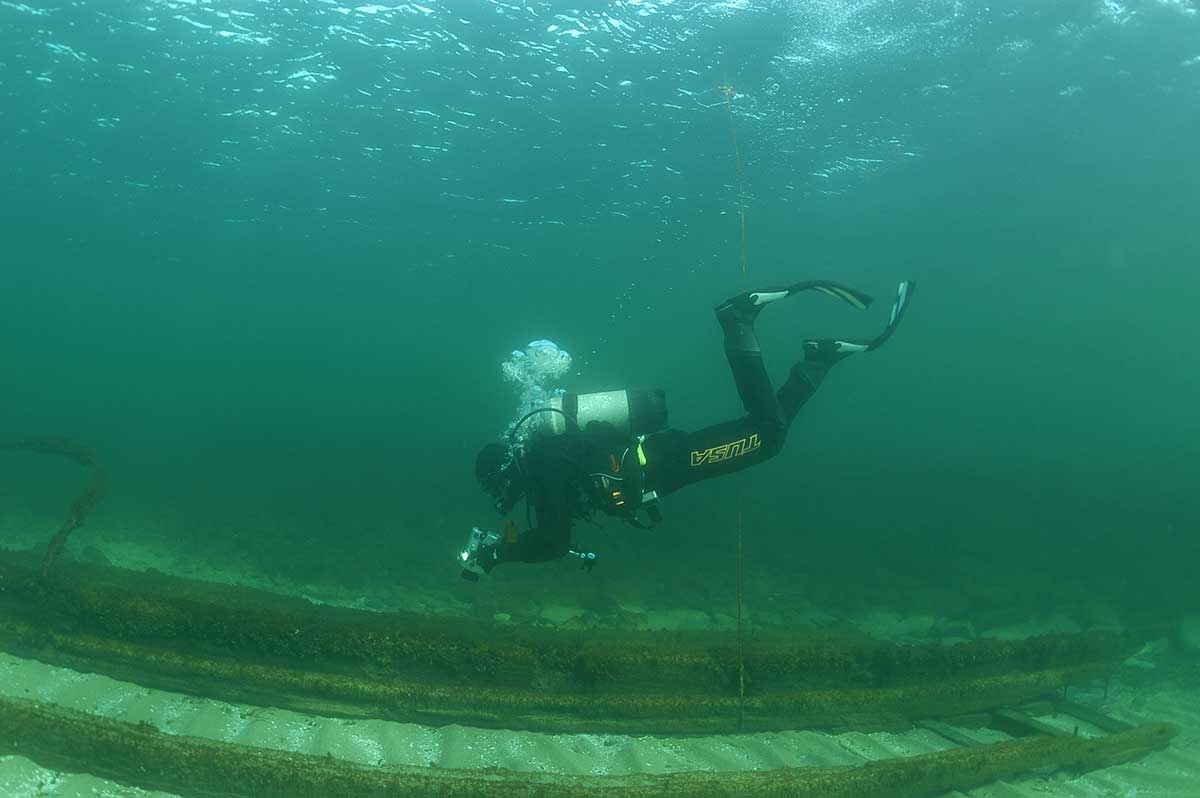
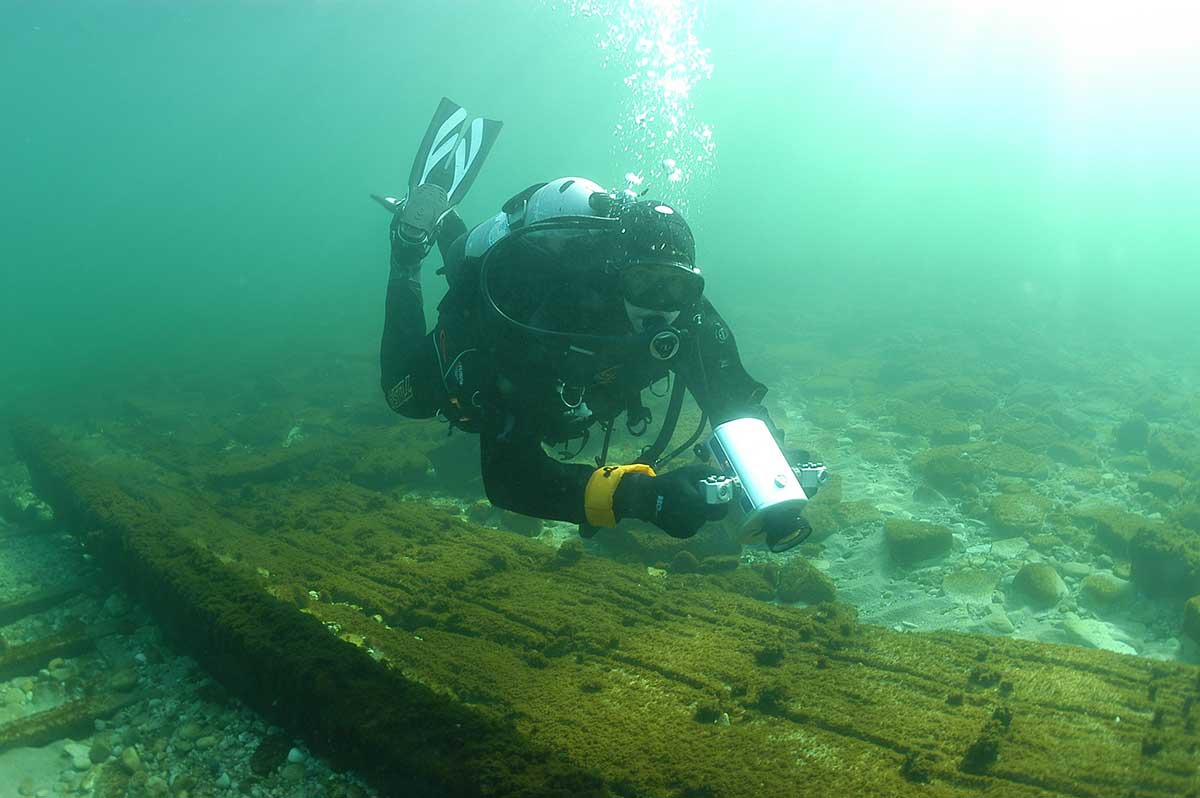
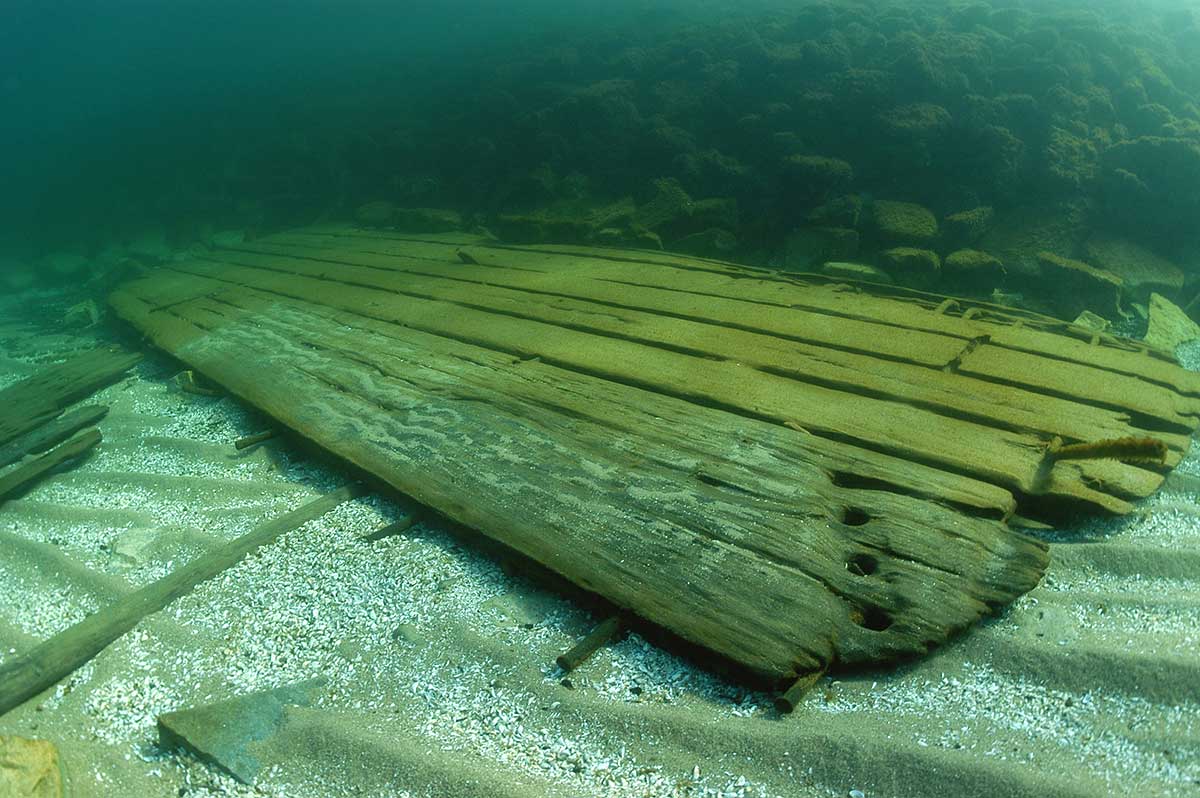
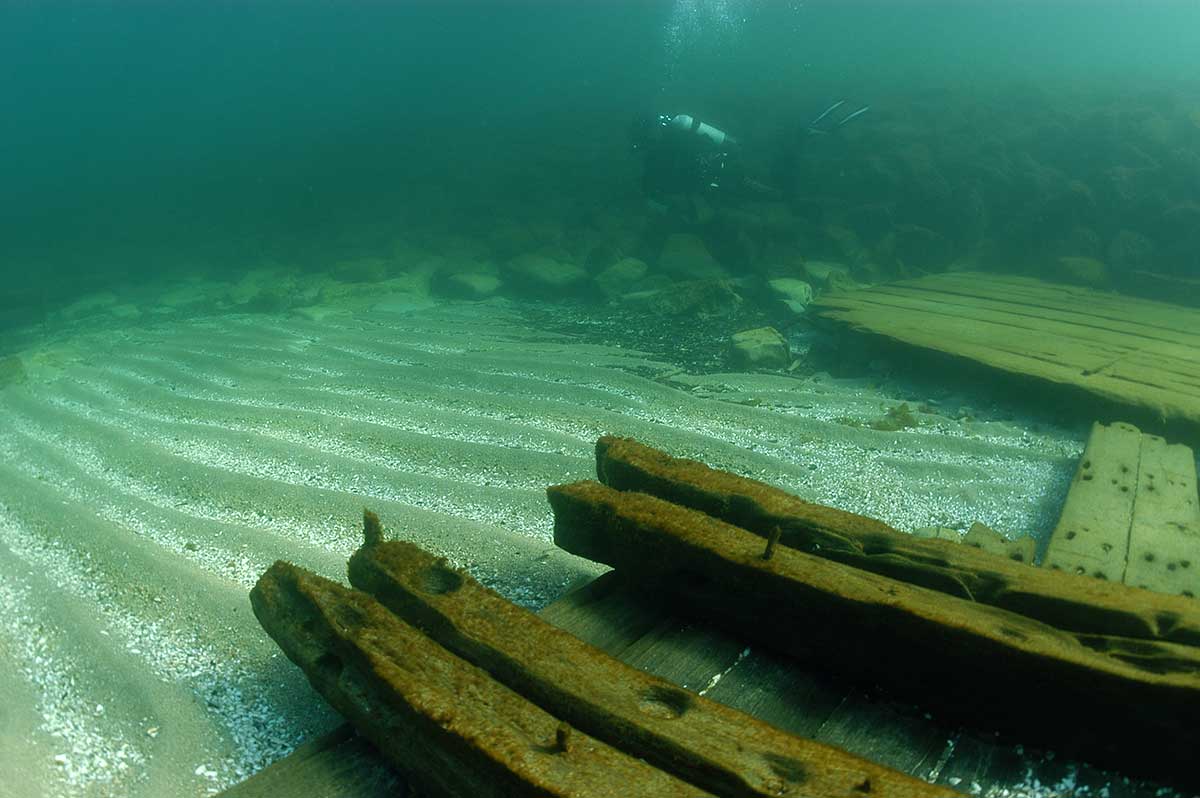
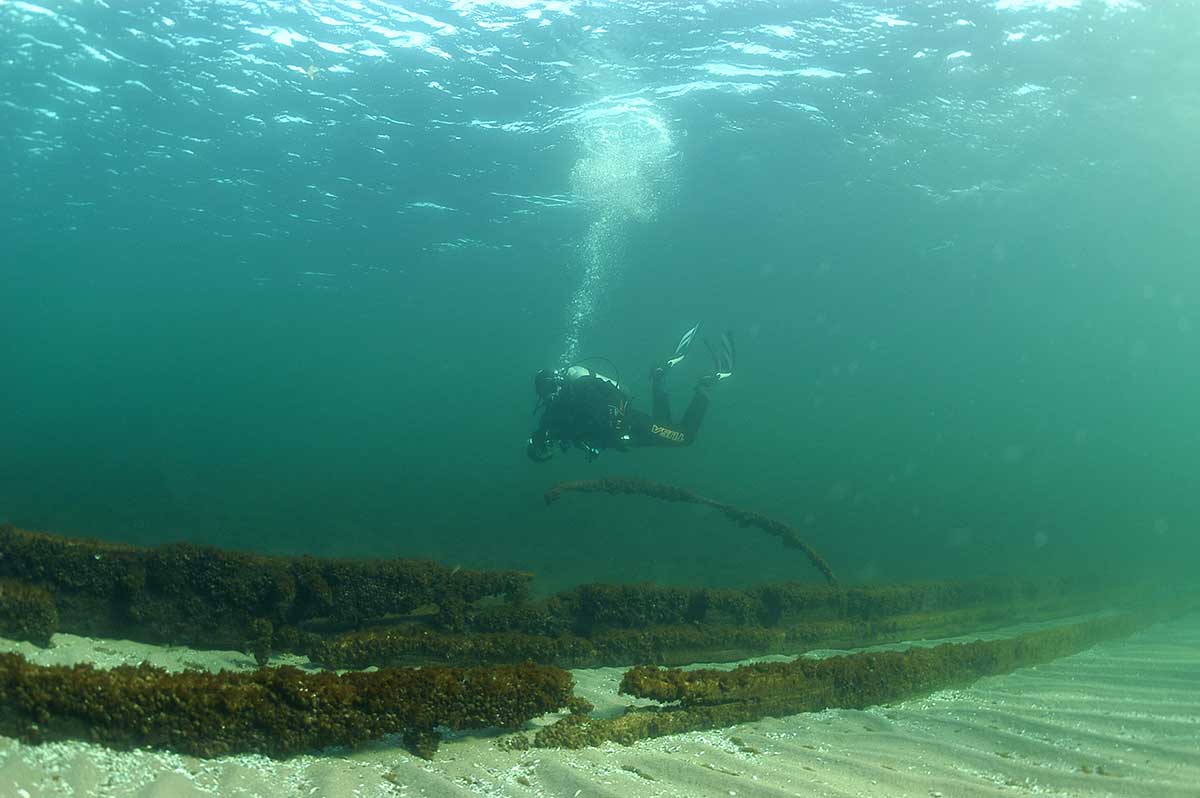
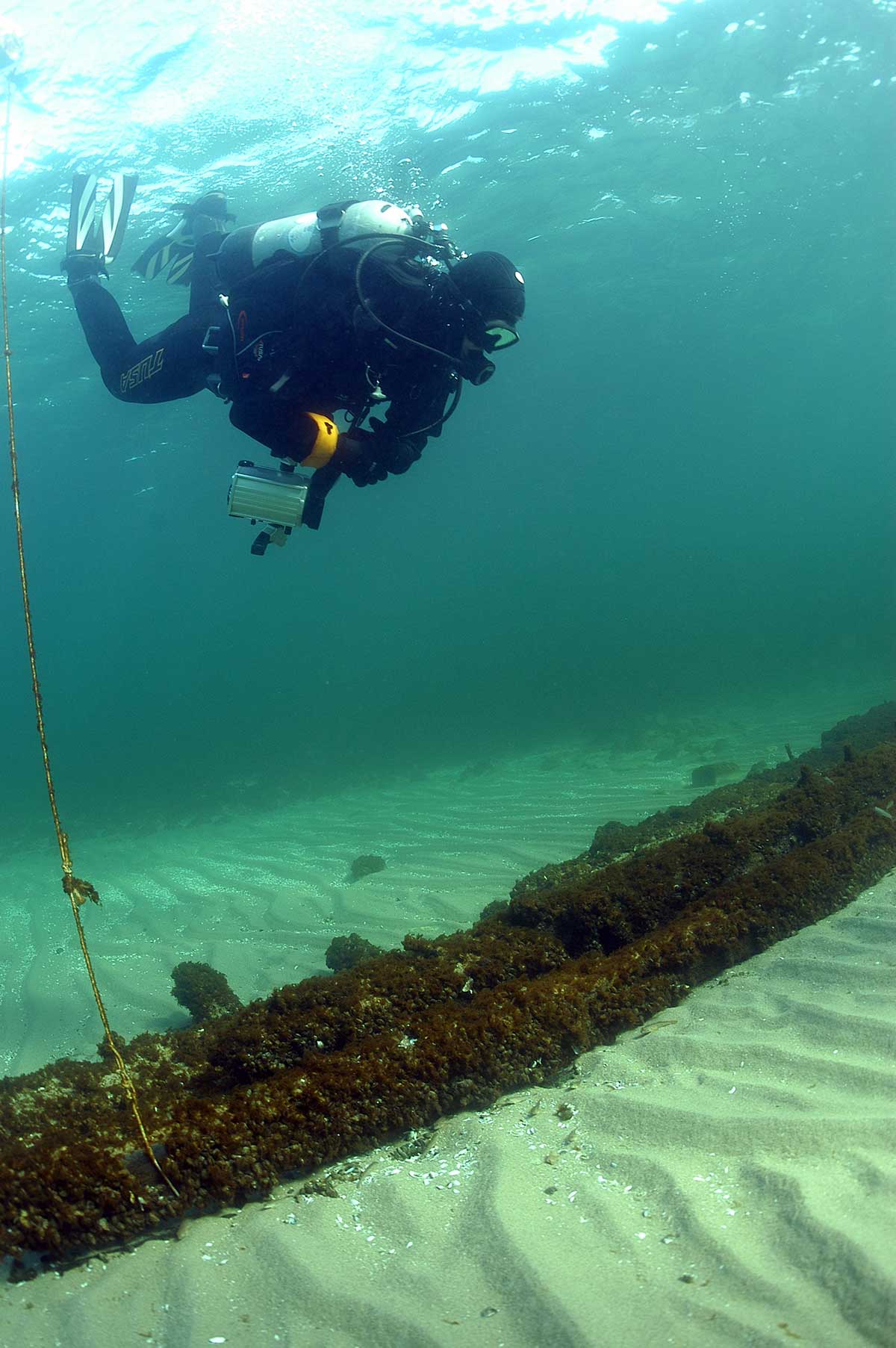
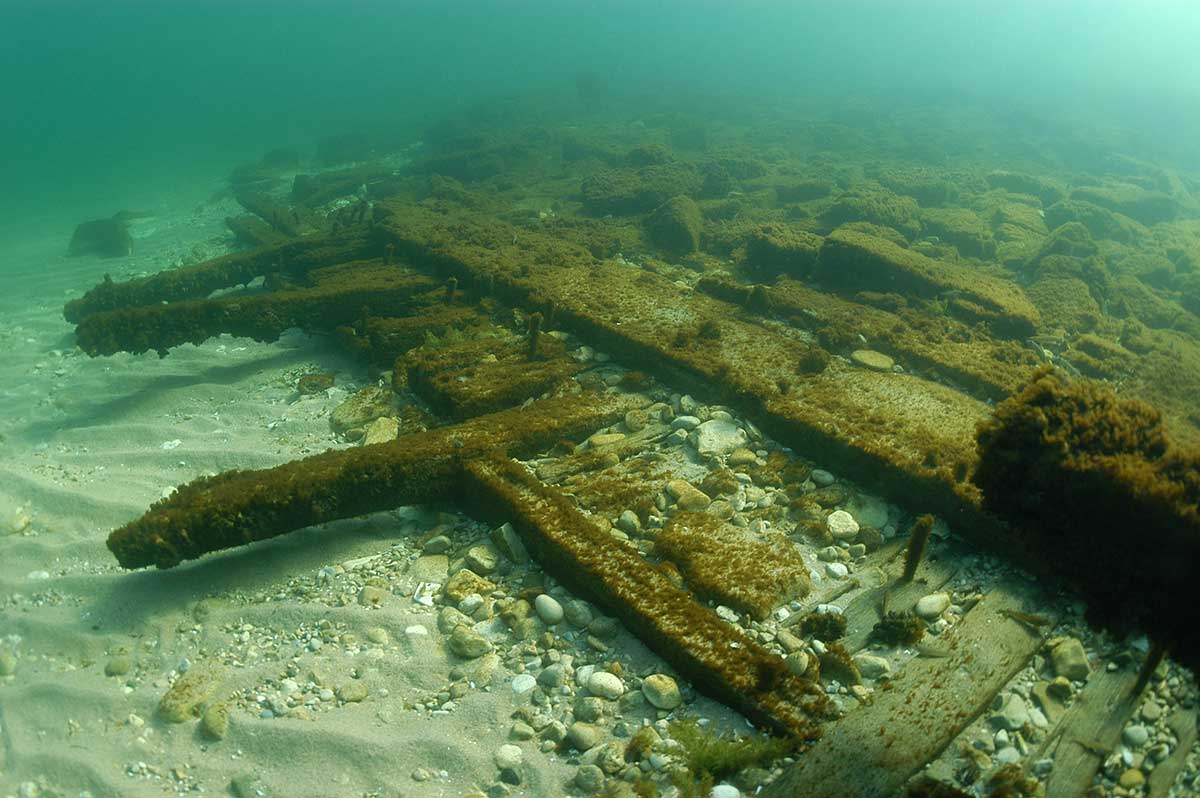
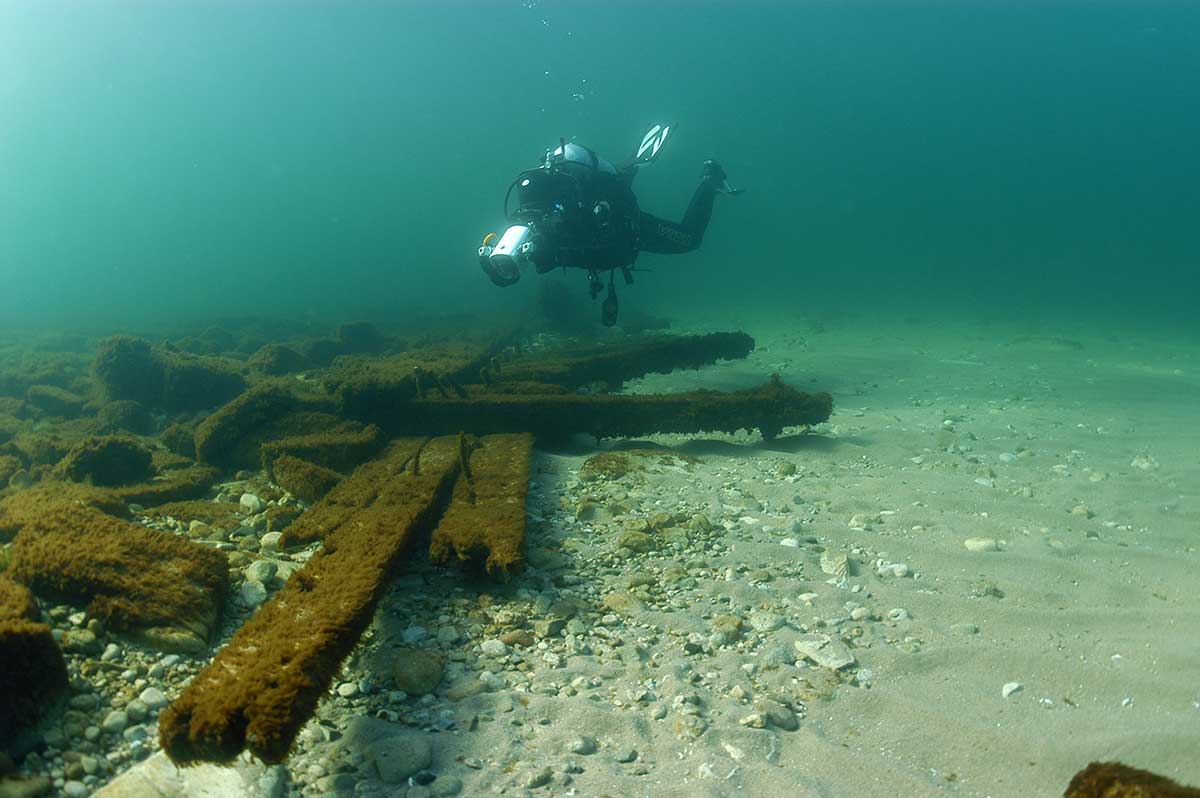
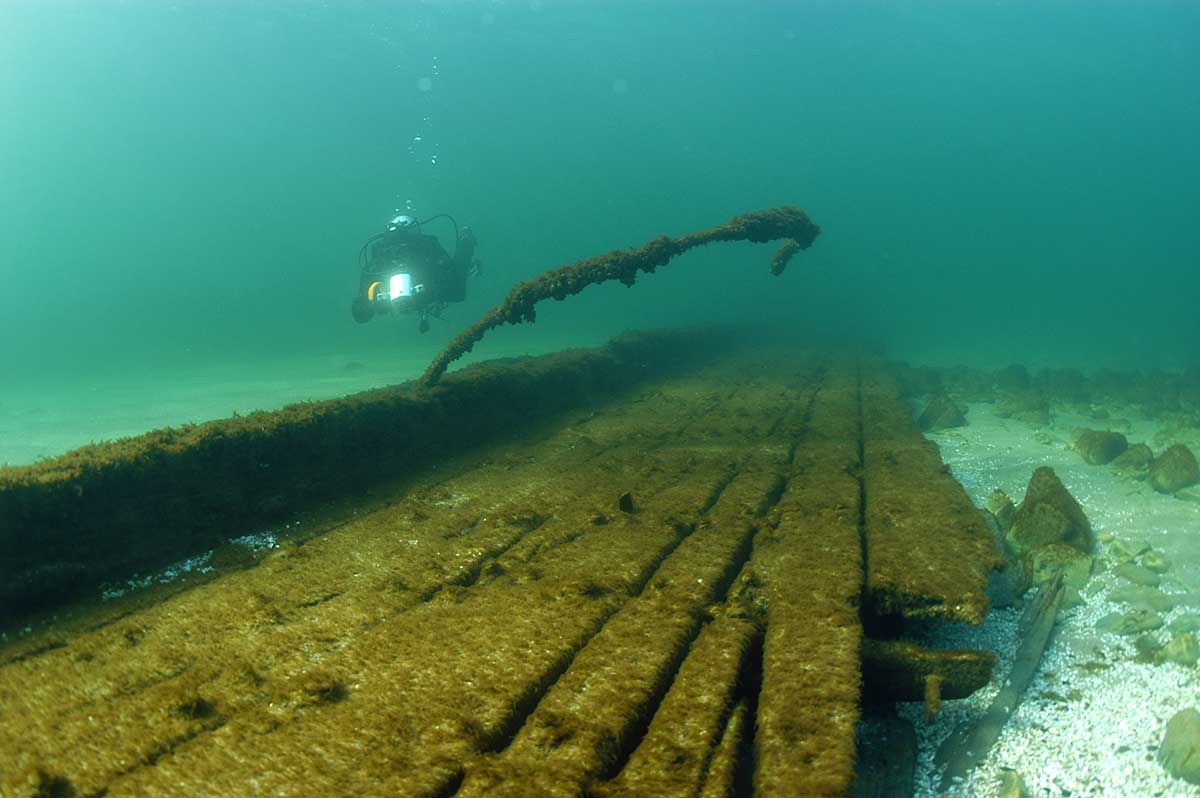
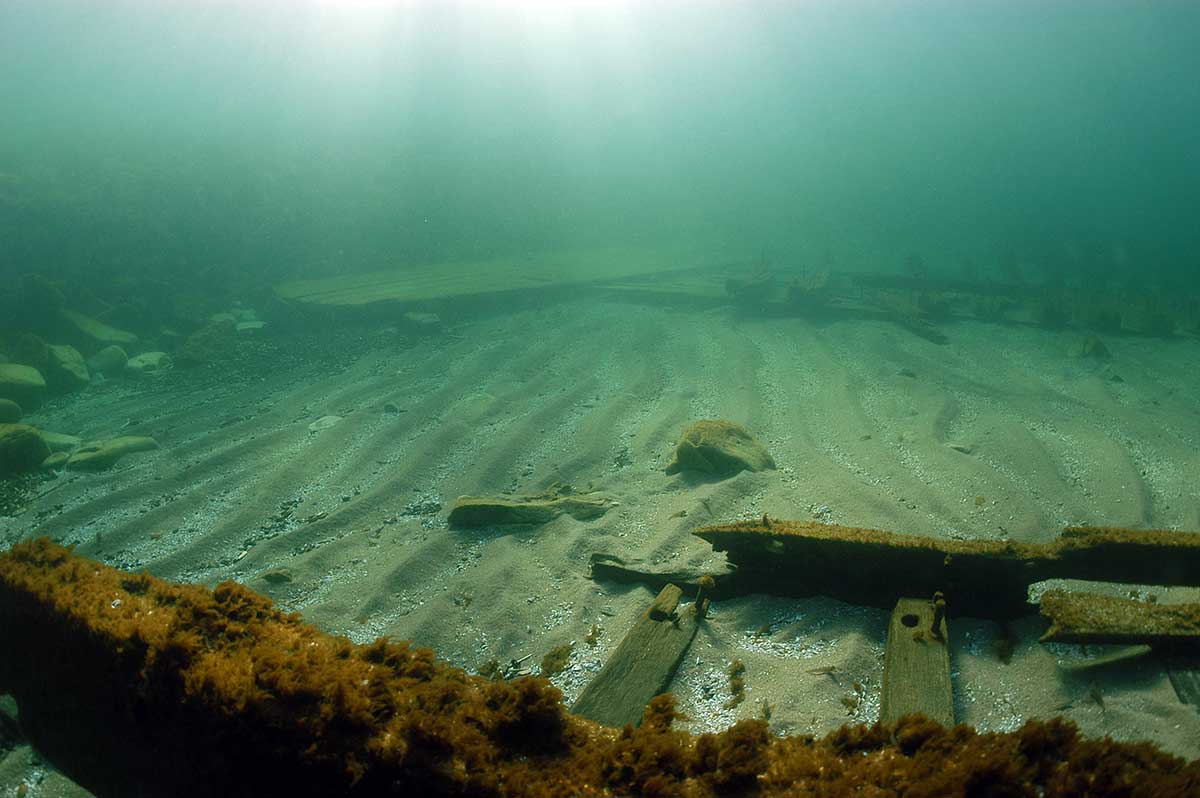
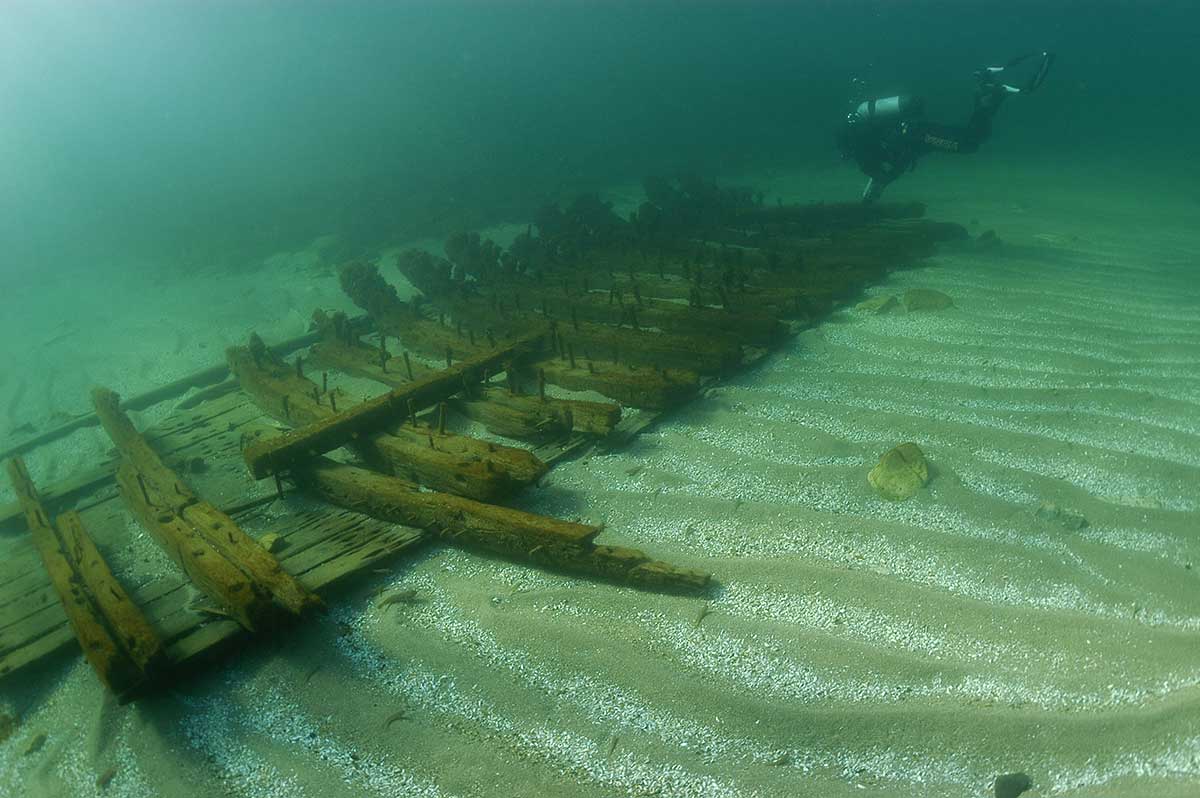

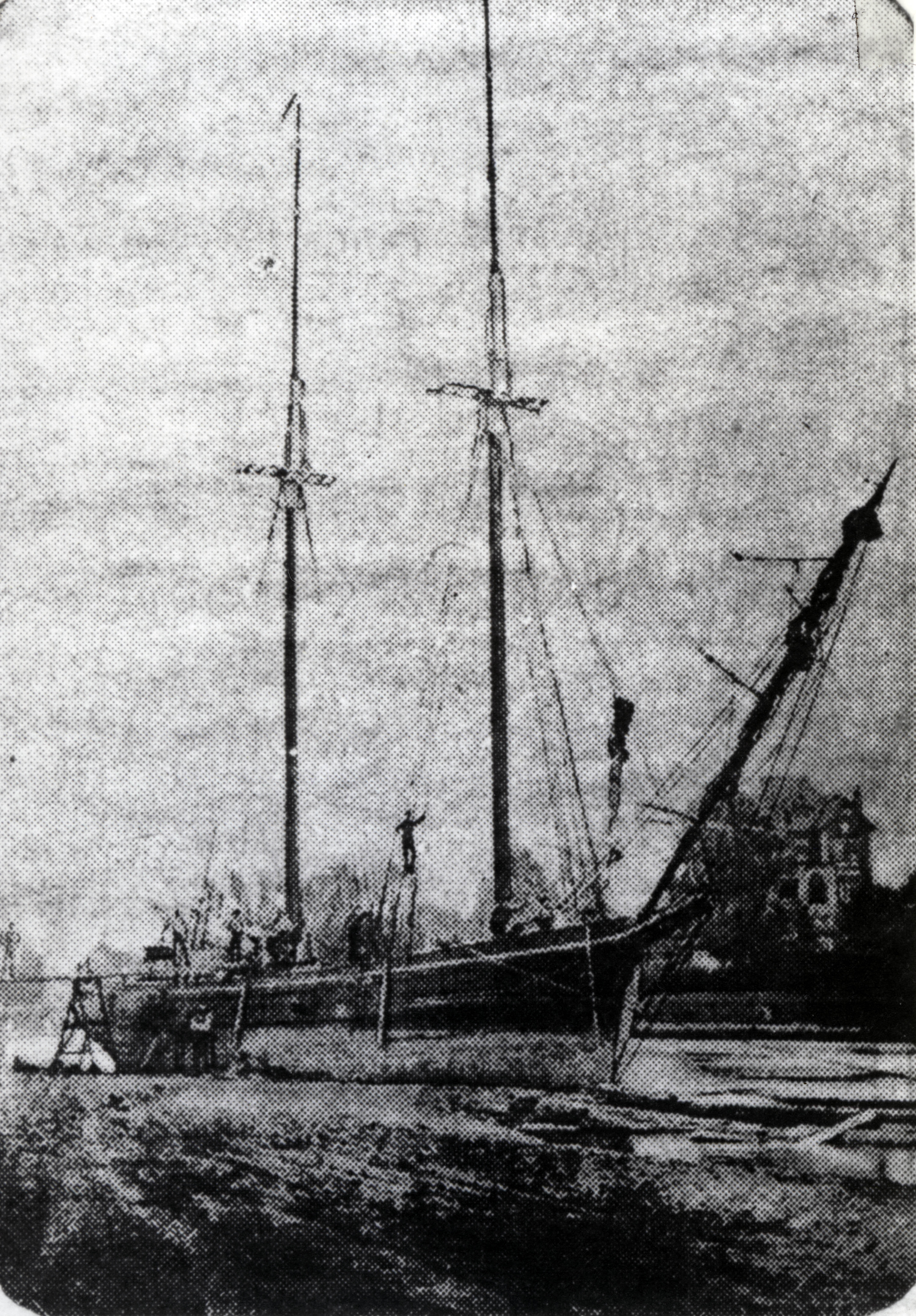
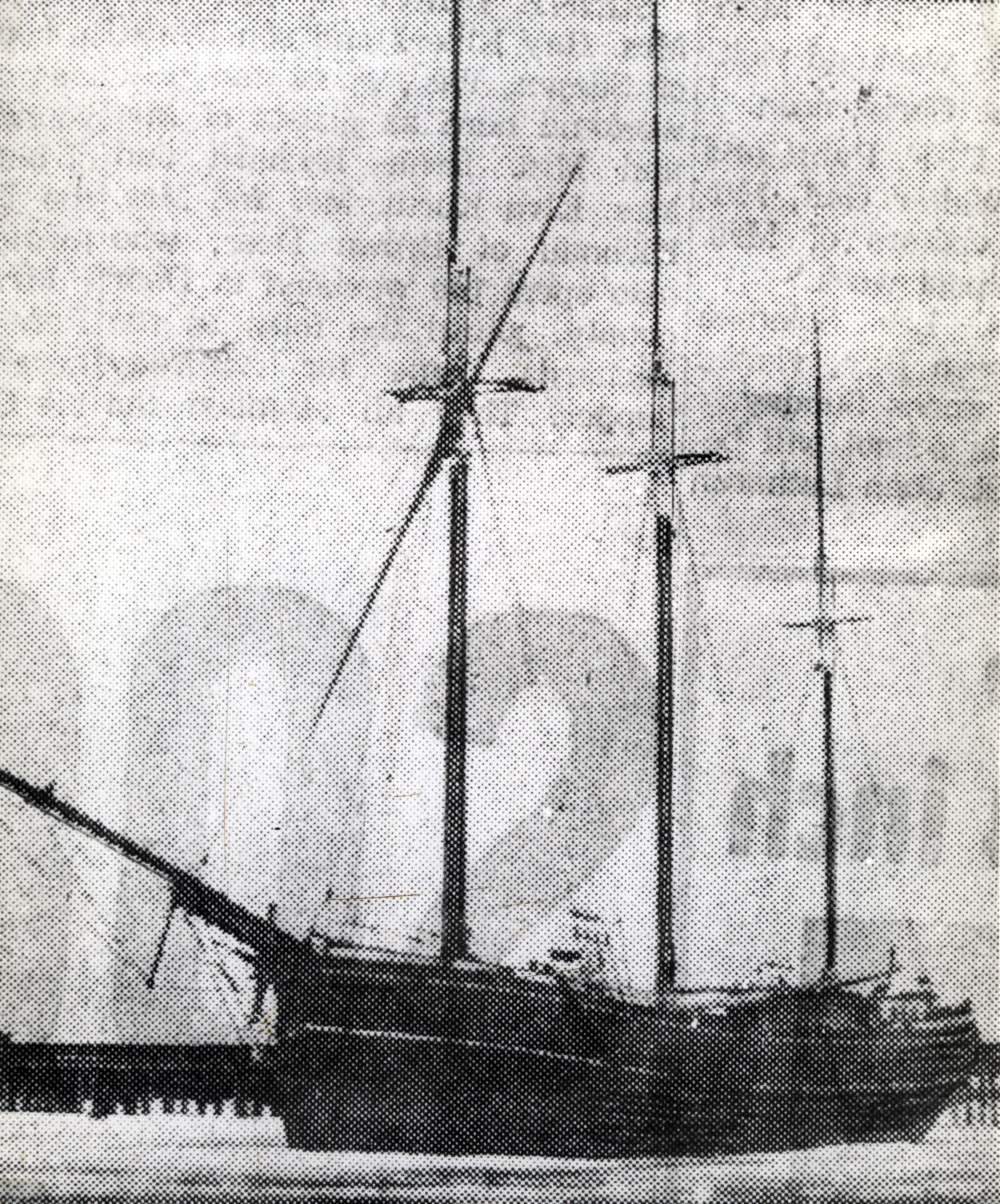

 Confirmed Location
Confirmed Location
 Unconfirmed location
Unconfirmed location